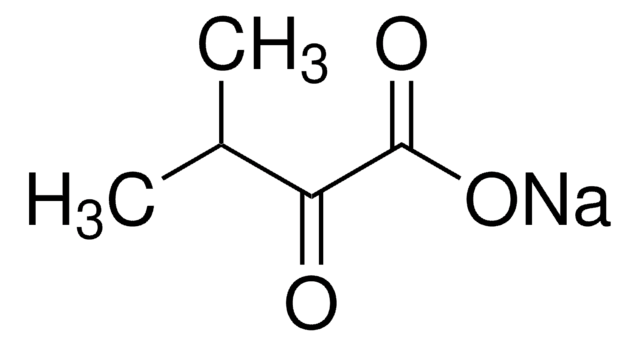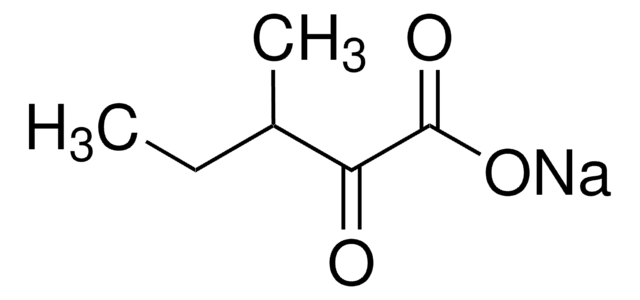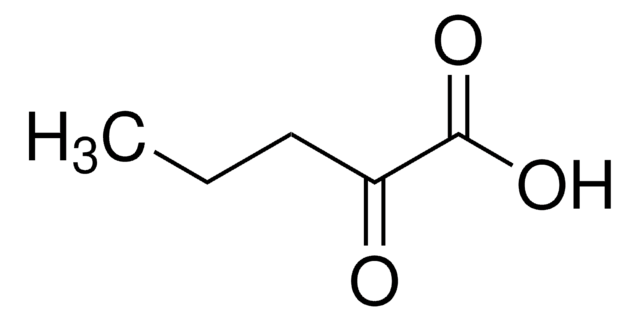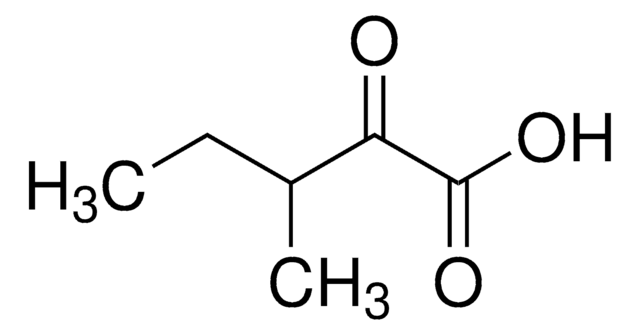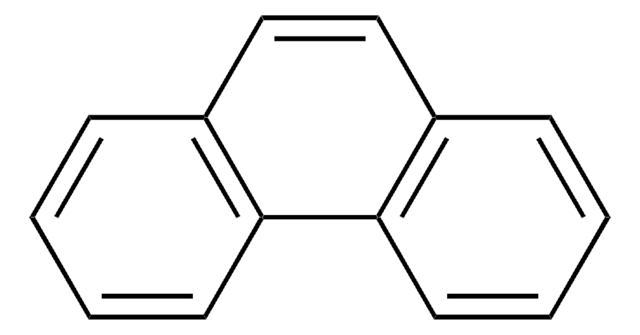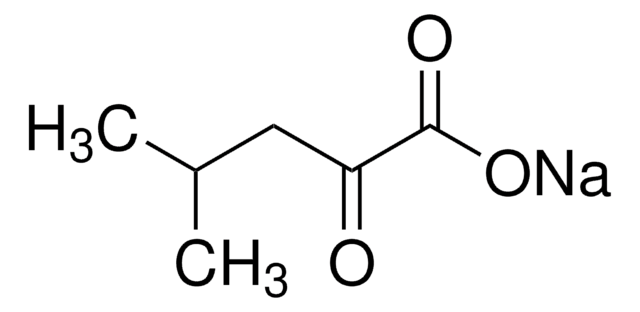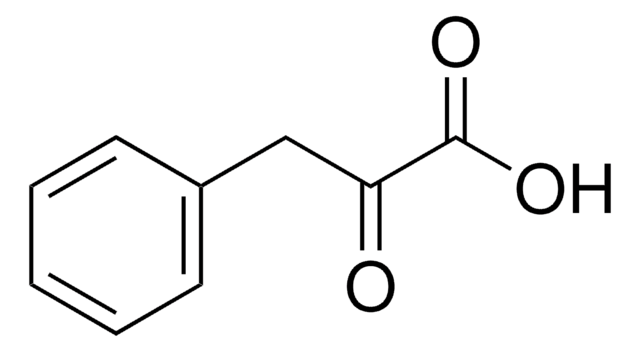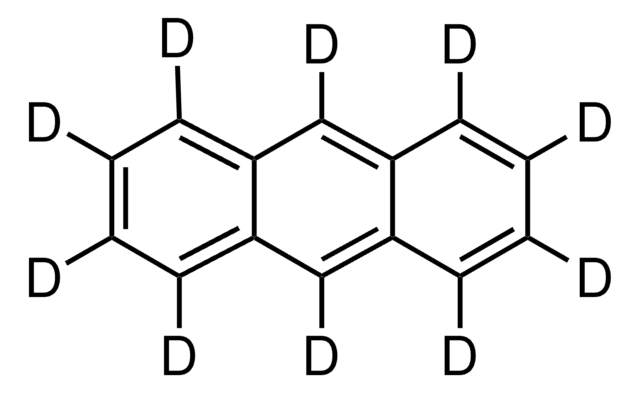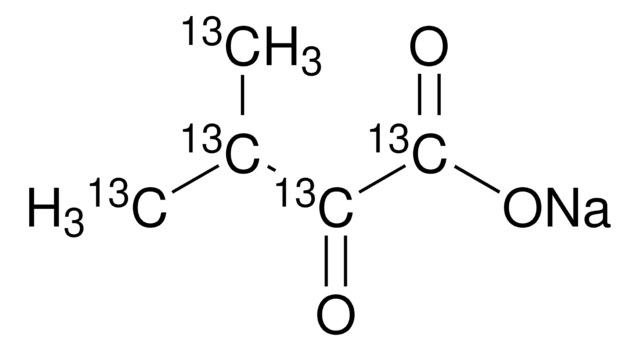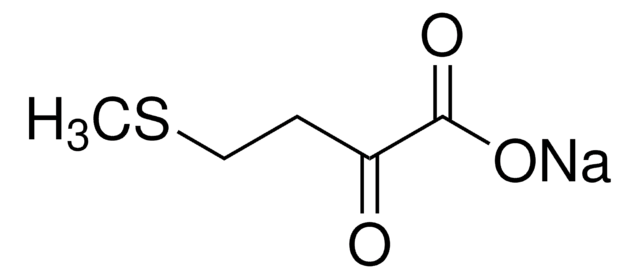Kluczowe dokumenty
68255
4-Methyl-2-oxovaleric acid
≥98.0% (T)
Synonim(y):
α-Ketoisocaproic acid, 2-Oxoisocaproic acid, 4-Methyl-2-oxopentanoic acid, Ketoleucine
About This Item
Polecane produkty
Próba
≥98.0% (T)
współczynnik refrakcji
n20/D 1.431
bp
82-83 °C/11 mmHg (lit.)
mp
8-10 °C
gęstość
1.055 g/mL at 20 °C (lit.)
grupa funkcyjna
carboxylic acid
ketone
temp. przechowywania
2-8°C
ciąg SMILES
CC(C)CC(=O)C(O)=O
InChI
1S/C6H10O3/c1-4(2)3-5(7)6(8)9/h4H,3H2,1-2H3,(H,8,9)
Klucz InChI
BKAJNAXTPSGJCU-UHFFFAOYSA-N
Szukasz podobnych produktów? Odwiedź Przewodnik dotyczący porównywania produktów
Powiązane kategorie
Opis ogólny
Zastosowanie
- Role in Human Brain Ketometabolism: 4-Methyl-2-oxovaleric acid has been implicated in the temporal patterns of ketometabolism in cerebral microdialysis fluids of patients with traumatic brain injury, underscoring its significance in biochemical pathways within the brain (Eiden et al., 2019).
Hasło ostrzegawcze
Danger
Zwroty wskazujące rodzaj zagrożenia
Zwroty wskazujące środki ostrożności
Klasyfikacja zagrożeń
Skin Corr. 1B
Kod klasy składowania
8A - Combustible corrosive hazardous materials
Klasa zagrożenia wodnego (WGK)
WGK 3
Temperatura zapłonu (°F)
Not applicable
Temperatura zapłonu (°C)
Not applicable
Środki ochrony indywidualnej
Faceshields, Gloves, Goggles, type ABEK (EN14387) respirator filter
Wybierz jedną z najnowszych wersji:
Masz już ten produkt?
Dokumenty związane z niedawno zakupionymi produktami zostały zamieszczone w Bibliotece dokumentów.
Klienci oglądali również te produkty
Nasz zespół naukowców ma doświadczenie we wszystkich obszarach badań, w tym w naukach przyrodniczych, materiałoznawstwie, syntezie chemicznej, chromatografii, analityce i wielu innych dziedzinach.
Skontaktuj się z zespołem ds. pomocy technicznej